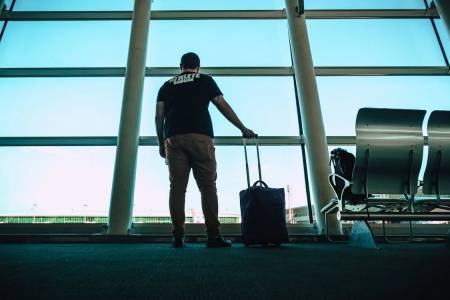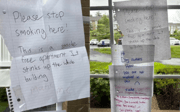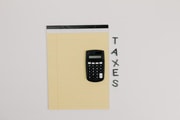Don't risk missing your flight! Here's the ID crackdown travellers are talking about
By
Maan
- Replies 0
Travel requirements can often change with little notice, leaving passengers scrambling to adjust.
This week, one major shift is set to impact a key part of domestic travel in the United States.
What’s behind the move—and what it could mean for Australians—has sparked renewed attention from both governments and travellers alike.
From 7 May, passengers flying domestically within the United States needed to show a passport or a US-issued photo ID that complied with the Department of Homeland Security’s REAL ID requirements.
Travellers without compliant identification faced the risk of being turned away at the airport.
The US Transportation Security Administration (TSA) confirmed that anyone aged 18 or over who did not have a REAL ID or passport would likely face delays, extra screening and possibly be barred from accessing security checkpoints.
According to the TSA, 81 per cent of passengers at checkpoints were already presenting an acceptable form of ID, including REAL ID-compliant documents.
The agency stated it would continue additional screening for those without a REAL ID until it was no longer viewed as a security risk.
The REAL ID initiative aimed to create uniform security standards for state-issued driver’s licences and ID cards, and to stop certain federal agencies from accepting non-compliant IDs for official use.
The program was initially introduced in response to the 11 September 2001 terrorist attacks.
Although Congress approved the changes in 2005, the rollout had been delayed several times before being locked in for May 2025.
The US government expected these new ID rules to trigger travel disruptions across the country.
Foreign travellers with valid government-issued passports were still permitted to board domestic US flights, as confirmed by the DHS.
Australia’s Smartraveller service updated its advice to warn citizens of the tightened US entry rules.
Its guidance stated: ‘Entry requirements are strict. US authorities have broad powers to decide if you're eligible to enter and may determine that you are inadmissible for any reason under US law.’
Smartraveller urged Australians to: ‘Check US entry, registration, transit and exit requirements. Whether you're travelling on a visa or under the Visa Waiver Program, ensure you understand all relevant terms and conditions before attempting to enter the United States.’
In the second half of 2025, Australians would also become eligible for the US Global Entry Program, which had been expanded following recent legislative changes.
The program allowed travellers to experience faster airport processing in the US through reduced paperwork and shorter queues.
In a previous story, we covered a dramatic incident that unfolded on a flight, leaving passengers and crew in shock.
The high-profile passenger's tirade mid-flight sparked major headlines and raised concerns about flight safety.
To learn more about what happened during the outburst, check out the full details here.

With international travel already filled with hurdles, do you think the REAL ID changes will make things smoother—or more stressful—for future trips? Let us know your thoughts in the comments.
This week, one major shift is set to impact a key part of domestic travel in the United States.
What’s behind the move—and what it could mean for Australians—has sparked renewed attention from both governments and travellers alike.
From 7 May, passengers flying domestically within the United States needed to show a passport or a US-issued photo ID that complied with the Department of Homeland Security’s REAL ID requirements.
Travellers without compliant identification faced the risk of being turned away at the airport.
The US Transportation Security Administration (TSA) confirmed that anyone aged 18 or over who did not have a REAL ID or passport would likely face delays, extra screening and possibly be barred from accessing security checkpoints.
According to the TSA, 81 per cent of passengers at checkpoints were already presenting an acceptable form of ID, including REAL ID-compliant documents.
The agency stated it would continue additional screening for those without a REAL ID until it was no longer viewed as a security risk.
The REAL ID initiative aimed to create uniform security standards for state-issued driver’s licences and ID cards, and to stop certain federal agencies from accepting non-compliant IDs for official use.
The program was initially introduced in response to the 11 September 2001 terrorist attacks.
Although Congress approved the changes in 2005, the rollout had been delayed several times before being locked in for May 2025.
The US government expected these new ID rules to trigger travel disruptions across the country.
Foreign travellers with valid government-issued passports were still permitted to board domestic US flights, as confirmed by the DHS.
Australia’s Smartraveller service updated its advice to warn citizens of the tightened US entry rules.
Its guidance stated: ‘Entry requirements are strict. US authorities have broad powers to decide if you're eligible to enter and may determine that you are inadmissible for any reason under US law.’
Smartraveller urged Australians to: ‘Check US entry, registration, transit and exit requirements. Whether you're travelling on a visa or under the Visa Waiver Program, ensure you understand all relevant terms and conditions before attempting to enter the United States.’
In the second half of 2025, Australians would also become eligible for the US Global Entry Program, which had been expanded following recent legislative changes.
The program allowed travellers to experience faster airport processing in the US through reduced paperwork and shorter queues.
In a previous story, we covered a dramatic incident that unfolded on a flight, leaving passengers and crew in shock.
The high-profile passenger's tirade mid-flight sparked major headlines and raised concerns about flight safety.
To learn more about what happened during the outburst, check out the full details here.
Key Takeaways
- From 7 May, domestic US flyers needed a REAL ID or passport to board.
- Non-compliant travellers risked delays, extra screening or being denied access.
- REAL ID rules were introduced post-9/11 and finalised after years of delays.
- Australians were warned of stricter entry rules and would gain Global Entry access in late 2025.
With international travel already filled with hurdles, do you think the REAL ID changes will make things smoother—or more stressful—for future trips? Let us know your thoughts in the comments.








